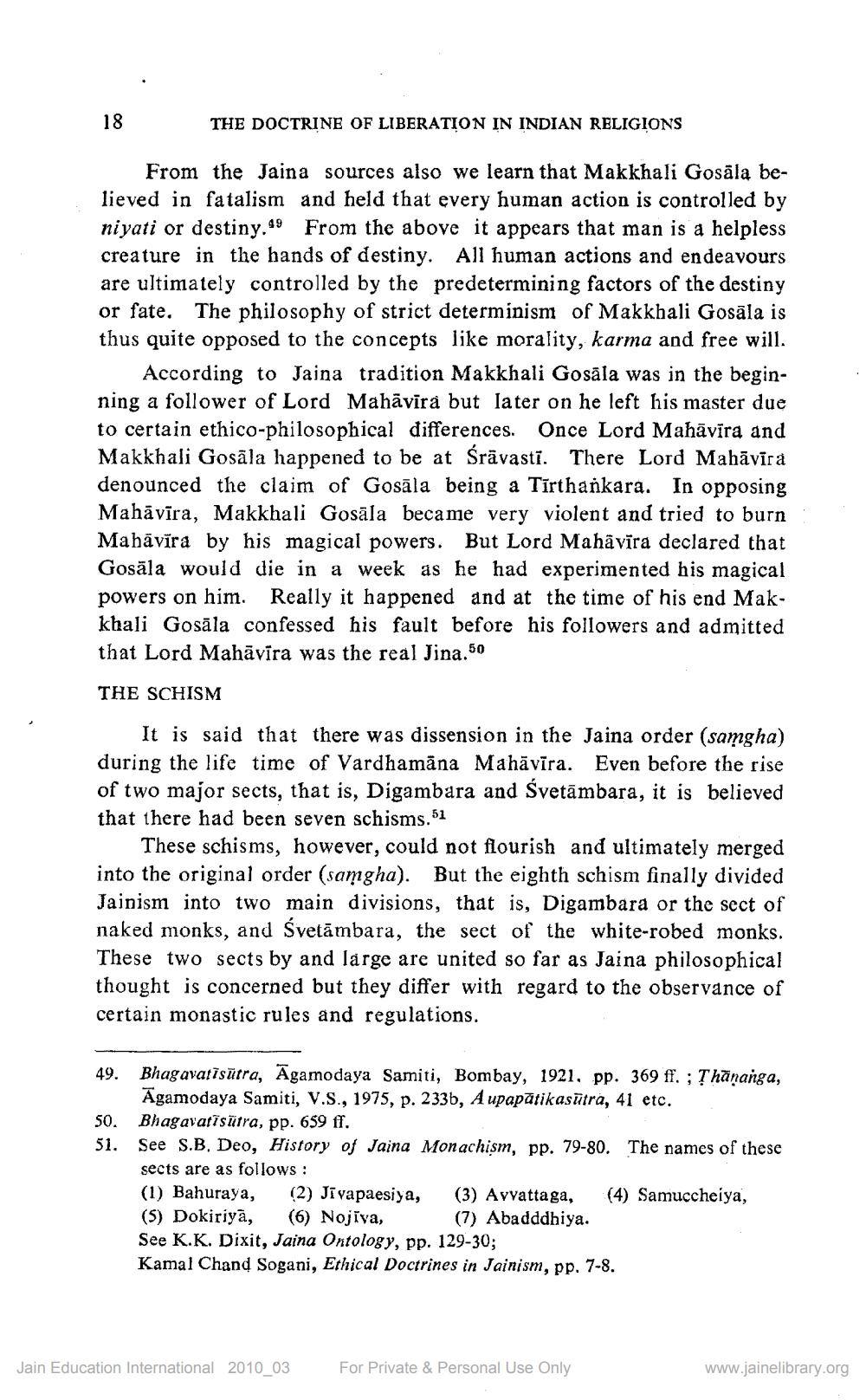________________
18
THE DOCTRINE OF LIBERATION IN INDIAN RELIGIONS
From the Jaina sources also we learn that Makkhali Gosāla believed in fatalism and held that every human action is controlled by niyati or destiny.49 From the above it appears that man is a helpless creature in the hands of destiny. All human actions and endeavours are ultimately controlled by the predetermining factors of the destiny or fate. The philosophy of strict determinism of Makkhali Gosāla is thus quite opposed to the concepts like morality, karma and free will.
According to Jaina tradition Makkhali Gosala was in the beginning a follower of Lord Mahavira but later on he left his master due to certain ethico-philosophical differences. Once Lord Mahāvīra and Makkhali Gosala happened to be at Śrāvasti. There Lord Mahāvīra denounced the claim of Gosala being a Tirthankara. In opposing Mahāvīra, Makkhali Gosāla became very violent and tried to burn Mahavira by his magical powers. But Lord Mahavira declared that Gosäla would die in a week as he had experimented his magical powers on him. Really it happened and at the time of his end Makkhali Gosāla confessed his fault before his followers and admitted that Lord Mahāvīra was the real Jina.50
THE SCHISM
It is said that there was dissension in the Jaina order (samgha) during the life time of Vardhamana Mahāvīra. Even before the rise of two major sects, that is, Digambara and Svetambara, it is believed
that there had been seven schisms.51
These schisms, however, could not flourish and ultimately merged into the original order (samgha). But the eighth schism finally divided Jainism into two main divisions, that is, Digambara or the sect of naked monks, and Śvetambara, the sect of the white-robed monks. These two sects by and large are united so far as Jaina philosophical thought is concerned but they differ with regard to the observance of certain monastic rules and regulations.
49. Bhagavatisutra, Agamodaya Samiti, Bombay, 1921. pp. 369 ff.; Thananga, Agamodaya Samiti, V.S., 1975, p. 233b, Aupapātikasūtra, 41 etc.
50. Bhagavatīsūtra, pp. 659 ff.
51.
See S.B. Deo, History of Jaina Monachism, pp. 79-80. The names of these sects are as follows:
(4) Samuccheiya,
(1) Bahuraya,
(2) Jīvapaesiya, (6) Nojiva,
(5) Dokiriya,
See K.K. Dixit, Jaina Ontology, pp. 129-30;
Kamal Chand Sogani, Ethical Doctrines in Jainism, pp. 7-8.
Jain Education International 2010_03
(3) Avvattaga, (7) Abadddhiya.
For Private & Personal Use Only
www.jainelibrary.org




